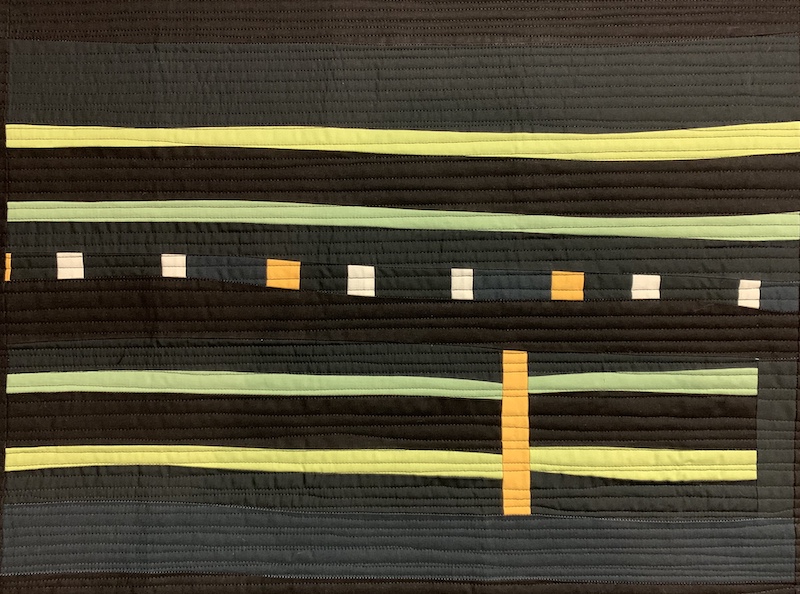I noticed at the recent agile conference that there were lots of people who billed themselves as agile coaches, and several sessions on coaching. Seemed like more of both than in past years.
I consider myself a coach, too, though not with a capital C. I usually coach managers or teams, and sometimes coaches. Mostly, I’m a consultant and coaching is part of the work I do in that role. But some people lay claim to “coach” as their job description. And some of those people have training from a coaching school.
All this, and a little story my friend Johanna told about an experience she had with a coach got me thinking about the different sorts of problems people bring to coaches, and the confusion that results when the coach is a “coaching process” type coach, and the problem is a skills-based problem (which requires content knowledge, in addition to process knowledge). Or a problem that calls not only for a coaching model, and a bunch of other models.
Back when she had a corporate job, my friend Johanna Rothman had the opportunity to work with a coach on a problem she was experiencing at work. It must have been an enlightened work place, because they employed Johanna AND coaches, whom they dispatched when a manager needed a bit of help. Johanna’s hope was the the coach could help her with the specific problem, which she hadn’t been able to figure out on her own.
Johanna explained the problem to the coach. The coach responded, “The answers are inside you.”
Johanna tried explaining the problem again. The coach answered, “The answers are inside you.”
The answers were not inside Johanna (at that time…I bet they are now). She needed specific information, direction and guidance to develop a new skill that would enable her to solve the problem. The response Johanna received to the problem she described was woo woo nonsense. It was no help at all. The coach was trying to be helpful, I’m sure. And she was acting out of a coaching model, just not one that fit the situation.
The Range of Coaching Practice
If we’re talking about a skill—whether it’s TDD, interpersonal feedback, or object oriented design, influencing change across the organization—the answer is not inside you. If you are shifting from a serial mental model of software development to a iterative/incremental mental model of software development, the answer is not inside you. Willingness to learn is inside you. The desire to maintain a good working relationships is inside you. The yearning for pride in work is inside you. The desire to see the organization improve is inside you.
The specific skill is not.
You need teaching, training, and direction, along with coaching and feedback. A coach in this situations needs to have task-specific (content) knowledge, in addition to coaching skills. And those coaching skills are likely different from the skills a life coach or goal coach brings to the table—unless they worked in the content field prior to studying a coach curriculum or taking up the coach label.
Life coaching—finding the answer in side you— is useful when you have a life problem; when you need a skill, you need skill coaching
Another friend, Don Gray, recently helped three people understand how an interaction blew up. As they unwound personalities and communication styles, two of them heard some information their default preference didn’t deal (well) with. He helped them recognize how their communication preference helped them, and hindered them. He helped them see additional options. To do this, he needed a coaching model(s), plus content knowledge on communication, human interaction, personality and cognition. Rare indeed. The answers may have been inside these people, but it took more than a coaching model to bring them out.
And of course, some times the answers are inside us.
Satir coaching assumes that each of us has the resources to be be happy and successful as a human—but may not be using all our resources to their full potential. Jerry Weinberg’s fab book, More Secrets of Consulting: The Consultants Tool Kit, is inspired by Satir’s self-esteem toolkit, and the book is tremendously helpful. I’ve studied the Satir model for many years, it informs much of the work I do with individuals and groups (and certainly how I live my life).
Likewise, the Solution-focused Coaching model assumes that the person being coached has some experience solving the problem for which they have sought coaching. This model assumes that the coachee has all the competencies needed to come to a solution. I had a little experience of this at the previous Retrospective Faciliator’s Gathering in Tisvilde, Denmark. Josef Scherer offered a session on Solution Focused Coaching, and since I a little stuck in my writing practice, I volunteered to be coached. It helped me a lot—the answer was inside me. But this sort of coaching wouldn’t have helped if my problem was that I didn’t know how to structure a coherent sentence.
There are other Coaching models: GROW, Achieve, and many more. More than you can shake a stick at (just google “coaching models”).
When someone is stuck, they may need a jiggle, in the form or a reframe, or a prompt to remember what they do know about solving the problem. When someone is struggling with an interpersonal issue or a life issue, they answer may lie within, and need a little help from inner resources to come out.
But sometimes, the person needs context, information, demonstration, a straight answer, or a skill.
Related: A Coaching Toolkit




Hi, Derek –
I sounds like you are using your experiences and ability to connect with people and help them see other options and help them think the implications of a course of action.
Would be interesting to think about the implicit and explicit models you use in your work (I think).
Thanks for stopping by and commenting.
(BTW, I think when you signed up for my newsletter, the double opt in got gummed up. I can’t fix it from my side.)
Esther
Hi Esther,
you make some great points, for me, not all coaches are equal.
I am working with an amazing change coach at the moment, she has great skills at getting teams to perform better, and deal with change, however she has no domain knowledge in Agile, and we are transforming the team to work in an agile manner.
The solution we are going to work with is for me to work with her, providing the domain knowledge.
A question for you,if you don’t mind…
If someone’s goal was to be an agile coach, excluding the domain knowledge, which coaching model do you feel is most appropriate, I get a lot of people suggesting co-active coaching ?
cheers
Cuan
Hi, Cuan –
Would be interesting to understand what the change coach does that makes her so effective.
Co-active coaching, from what I’ve read and experienced is life/business goal coaching, which can be useful when people are stuck. You might also pick up Coaching Plain and Simple, and How Coaching Works (which explains GROW & co-active coaching among other models).
It can’t hurt to learn about congruence, and making contact (from the Satir perspective). If you can’t make contact, not much else will happen.
And practice staying in your own hula hoop (aka keeping boundaries). It never goes well when the coach is more invested in solving the problem than the person being coached.
ED
In many cases ‘Agile Coach’ is just a fancy name for a consultant. A coach, as I see it, is non-directive and doesn’t have a vested interest in the outcome. A consultant on the other hand does, and he actively helps the customer to (try to) reach some goal. I’ve blogged about it some while ago: http://www.scrummaster.nl/2010/06/15/agile-coach-counsellor-consultant/, but for those who prefer to read it in English Google Translate can help: http://bit.ly/99eR2a
Hi, Maurice –
Thanks for sending the translator link.
I agree, it’s a murky distinction.
I consult, and as part of that work, I often coach people. Sometimes when I’m coaching someone, I offer expertise. For me, it’s not useful to say I’m one or the other–I do both and chose based on the situation.
I suspect most people with the title of agile coach do, too.
I like to call myself a coach because it sounds fancier than ‘business process consultant’!
Kidding aside, earlier in my career I really struggled with how to find the right level to help influence change. As you mention there are umpteen coaching models, change models, developmental models and metaphors to pick from, not to mention practices.
I have found it helpful to focus less on the ‘noise’ and more on helping an organization figure out what their goals are and how Agile can help them progress towards those goals.
Right. And to do that, you need more than a handful of “life coaching” models.
Hi,
for me the most basic description of Coaching (big C 😉 is:
Helping someone to get into a meta position, let him/her see what he/she got stuck in (visualize it) and help him/her to change the situation.
That’s Coaching. Consulting is more like: “I tell you how to…”
It is true, that Coaching can not solve every problem (at least not fast enough). But on the other hand, many problems I encounter that look like technical problems are “people” problems. Consulting is difficult here…
So you need more than a handful of “tech advices”
Heiko
Of course.
The point is that if you are working with software teams, you need both process and content. And you need to know when to apply each (which in either case, is after you’ve made contact).
Esther
I’m a coach. I coach & teach Kanban, Agile, Scrum, and Rugby (ironically I’ a forwards coach, so I coach the scrum in Rugby too).
I want to take back the word Coach from the “woo woo” back to reality. If you ever watched ANY sport you’ll see that most good coaches in that field go through many modes – listening and reflective coaching is part of it, so is mentorship, and so is directive coaching (“you need to try doing this specific thing”).
Back in the day when I did my first management training I learned that I was “not allowed the luxury of having a management style” and that I needed to manage people based on their needs and the current situation: situational management. So it is with coaching.
At different times people need to be:
helped to work out their own answer;
pointed in the right direction, but left to work out their own details;
taken to a starting point to evolve on their own;
shown what good looks like, to learn from;
shown the way;
told exactly what to do explicitly;
any combination of the above as needed, probably with some other things too.
This is situational coaching. The skill of a good coach in any field is to get the best out of the person or team being coached. It’s a bit like the separation of Learning and Teaching. Good teachers know that Learning in the student is the important thing, not how good the teacher looks.
If you learn something that helps you do your job better while talking with a coach, no matter which ‘mode’ you were coached in or where that learning came from (intrinsic or extrinsic) that is the positive outcome we were looking for. Not how good or bad the coach looks – that is irrelevant.
Good coaching is difficult, and changes with each person and even over time with the same person being coached. Good coaching is valuable.